Answer Engine Optimization
Answer engine optimization, or AEO, is the process that enhances your content so that answer search engines—like Google’s Featured Snippets, Bing Chat, Chat GPT, Siri, Alexa, and other AI-powered services—can use it directly to deliver users with short, accurate, and direct responses to their queries. Answer processors do far more than merely show links; they respond to user requests with quick, concise solutions. Regarding usual search engines, these search engines attempt to deliver the best findings as quickly as feasible, reducing the need for scrolling.
The process of arranging and enhancing digital data for answer engines like Google’s Featured Snippets, voice assistants like Siri and Alexa, and artificial intelligence (AI) chat bots like Chat GPT is known as answer engine optimization (AEO). AEO aims to position content as the definitive solution that appears or given to clients directly—often without a click— in comparison with typical SEO, which promotes ranking webpages in search results. Effective AEO requires knowing user intent, integrating structured data, reacting to the conversational nature of current search devices, and structuring content for easy comprehension.
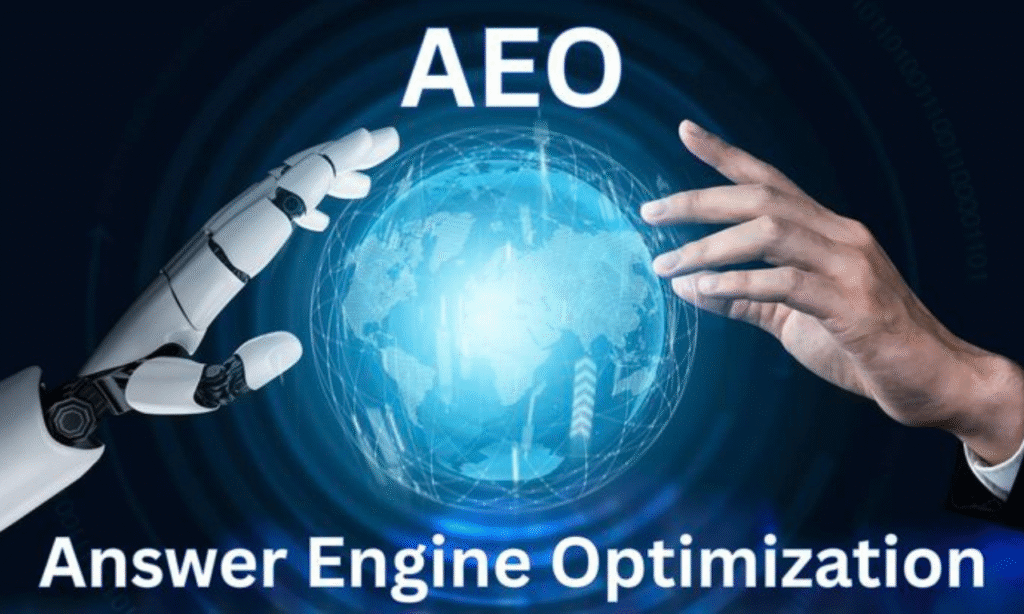
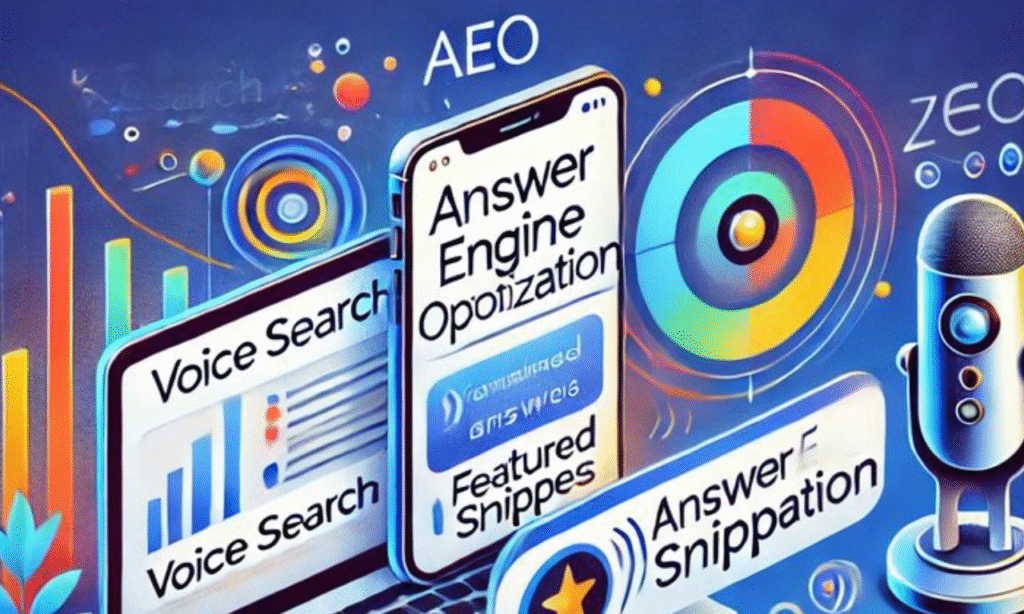
Why AEO Matters
- Additional individuals are using zero-click searches: Search queries that offer users with the information they need directly on the search results page without having them to follow through to any sites are termed as zero-click searches. This trend could cause a boom in the usage of gadgets such as Google’s Featured Snippets, Knowledge Panels, and People Also Ask boxes, that offer instant responses at the top of the page.
- AI Assistants and Chat Bots: They’re artificial intelligence-driven apps that communicate with users via text or voice in natural language. AI assistants like Siri, Google Assistant, and Alexa can carry out tasks, handle concerns, provide real-time information when commands via voice are provided. Chat bots imitate speech from humans to assist customers with transactional tasks, support issues, or queries. They are often integrated into apps, sites, or messaging platforms.
- Voice search: The method enables users to interact with devices and carry out searches by saying instead of typing. Voice search, which is prompted by artificial intelligence and natural language processing, is often utilized by virtual assistants like Google Assistant, Siri, Alexa, and Cortana. It offers quick, simple, and hands-free information access on mobile devices and smart speakers.
Key Elements of Answer Engine Optimization
Answer engine optimization, or AEO, is the act of making online content visible and accessible to answer engines, including Google’s displayed snippets, voice assistants, and AI-powered search tools. Major components of AEO includes an intense focus on search intent, the use of structured data (schema mark up) to assist in machine analysis of content, and brief, clear replies to focused user inquiries.
To make it easier for algorithms to extract relevant data, content should be well-organized by using headings, bullet points, and regularly repeated issues. Additionally, optimizing for question-based and natural language demands, especially in conversational formats, improves the chances for AI and voice search software will decide on your reply as the most suitable solution.

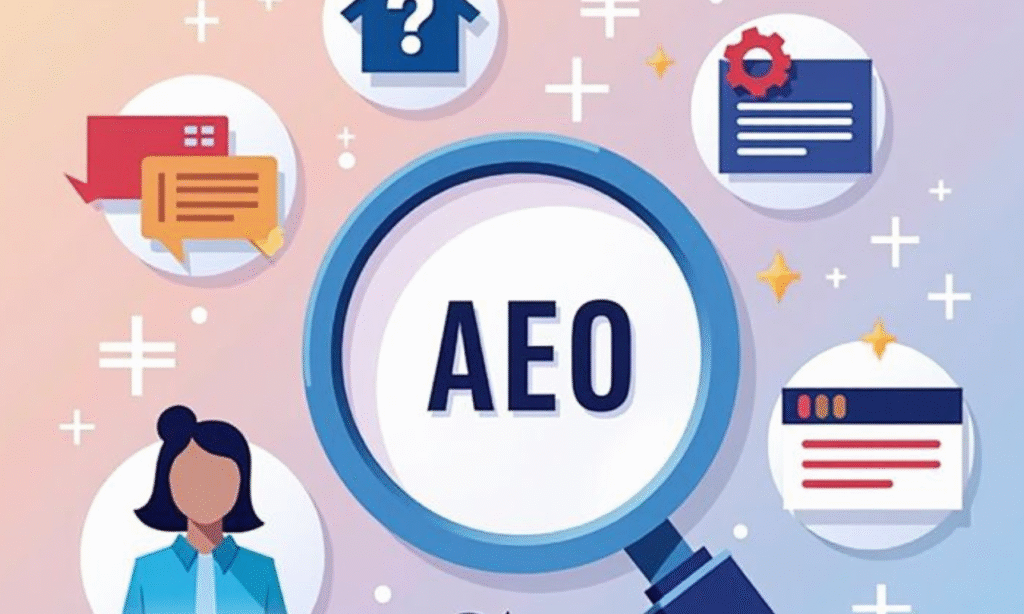
1. Accept the intent
Realizing the basic goal or purpose of a user’s query—what they truly hope to accomplish when they search for something—is known as understanding intent in digital content and search optimization. Informational (seeking for information or answers), navigational (looking for a specific website or page), and transactional (wishing to take an action, like making a purchase or signing up) are the three primary types of search intent.
2. Use Structured Content
Structured content enables you to organize the content on a webpage in a way that is easy for search engines and viewers to understand—clear, logical, and scannable. It promotes the addition of bullet points, numbered lists, tables, and short paragraphs to enhance readability. Applying proper tags (like H1, H2, and H3) for dividing the material into sections is another component of it.

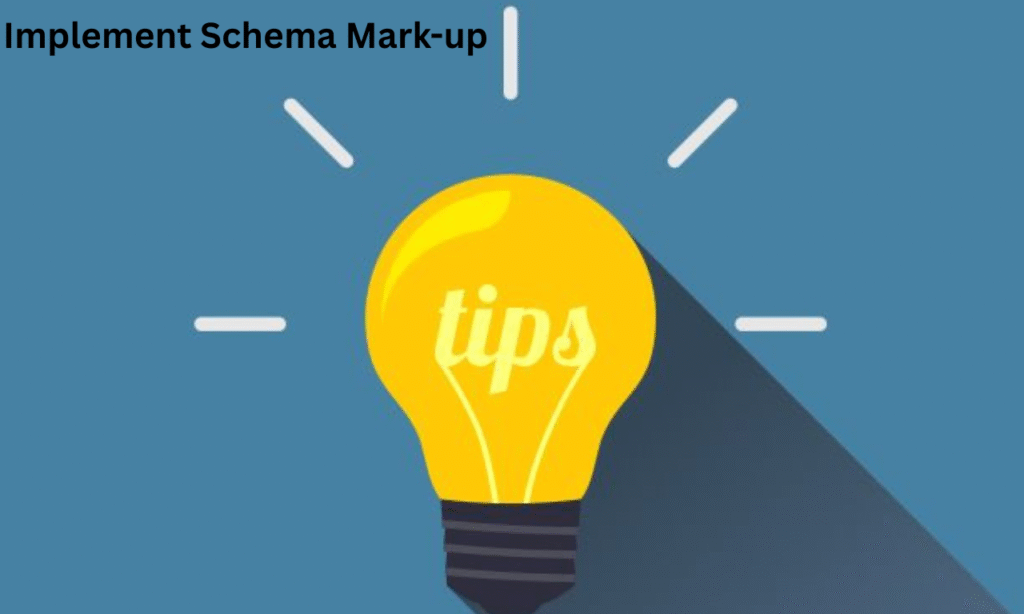
3. Implement Schema Mark-up
By using structured content, you can arrange content on a webpage in a way that is basic, logical, and straightforward for users as well as search engines. It includes utilizing bullet points, numbered lists, tables, and short paragraphs to improve readability. employs the use of relevant headings (such H1, H2, and H3) to separate the content into various parts.
4. Optimize for Featured Snippets
You may improve the content for displayed snippets by arranging it to briefly and effectively arranged reply specific user searches. The possibility that search engines, especially Google, can select your material to appear in the top “snippet” box above regular search results rises as a result. Featured snippets tend to include short phrases, headings, numbered lists, or tables offering rapid responses to questions without forcing visitors to visit a website.


5.Build Topical Authority
As a way to advertise your website or brand as a trustworthy educated source, you must build topical authority through providing an extensive, quality collection of articles about a specific topic. This involves replying to most common and technical questions, covering an array of related subtopics, and publishing in-depth, researched content.
6. Improve Page Experience
Optimizing various areas of your website to make sure users have a smooth, quick, and interesting experience on any platform is known as improving page experience. These aspects are often referred to as Core Web Vitals and include features like rapid load periods, responsiveness on mobile devices, secure connections (HTTPS), few annoying pop-ups, and an identical internet site layout. An amazing page experience impacts search engine rankings and stays visitors on your site longer.
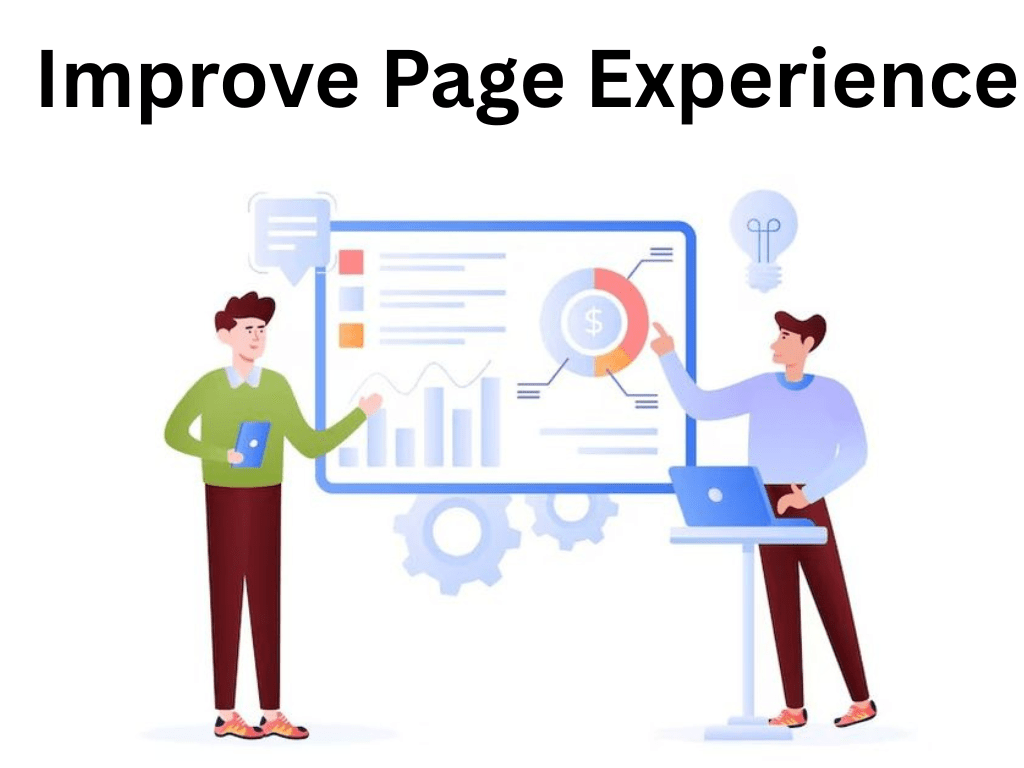

7.Use Conversational Language
A strong page experience not only maintains visitors on your site longer; however, it impacts search engine rankings. Specially for users engaging with voice search or AI assistants, this method makes materials easier to understand, relatable, and intelligible. Conversational language increases the possibility that your submission will be chosen as a direct response in the context of Answer Engine Optimization (AEO) since it closely matches how clients formulate questions and how answer engines analyze them.
Tools to Help with AEO
- Also Asked com: This tool for keyword research and content creation helps marketers, SEO experts, and writers to determine the most often asked questions about a particular subject. It visually maps out linked questions in a branching structure through examining data from Google’s “People Also Ask” feature. This shows the connections among searches and the growth of user intent from one query to another.
- Answer the Public: Based on a specific keyword or topic, Answer the Public is a keyword and content research tool that provides a broad range of terms, phrases, and search queries that people commonly input into search engines. It allows writers of content recognize user intent along with the kind of information consumers are searching for by providing these inquiries in a visual layout, frequently arranged by “what,” “how,” “why,” and “where.”
- Google’s People Also Ask: Generally visible in search results, Google’s People Also Ask (PAA) is a dynamic search engine that displays a list of related queries that users often have about a subject. A rapid reply from a webpage, along with a link to the source, can be revealed by expanding each question. An interactive and flexible list is created as users click on questions, and more related queries are swiftly added.
- SEMrush and Ahrefs: Both of these powerful digital marketing and SEO tools are widely utilized for backlink surveillance, competitor analysis, keyword research, and content optimization. Users may track traffic sources, discover high-performing keywords, monitor search ranks, and explore methods of boosting their online visibility owing to the excellent features available on both platforms.
- Validator for Schema Markup: The Schema Markup A tool called Validator is used to verify and validate structured data, or schema mark-up, on web pages to be sure it is implemented correctly and follows with Schema.org’s rules. Users can check if their structured data is expressed effectively and if it is able to receive rich results in search engines such as Google by providing a URL or snippet of code.

Limitations of Answer Engine Optimization (AEO)

1. Lack of Clicks and Traffic
While users receive direct answers from search outcomes—such as voice assistants or displayed snippets—without clicking through to the original site, this is defined as “lack of clicks and traffic.” The result is a regular limitation in Answer Engine Optimization (AEO). This may reduce traditional website metrics like page views, session duration, and conversions, yet it additionally boosts visibility and promotes your data as a reliable source. Even if the content is indexed, it might not bring in any measurable traffic due to a phenomenon as zero-click searches.
2. Limited Control Over How Content is Displayed
Search engines and AI assistants collect content from websites and then display it in formats like knowledge panels, voice responses, or featured snippets, which causes an issue with answer engine optimization (AEO) and frequently occurs without the creator’s consent. There is accordingly less control over the way the content is displayed.
It also suggests that you have limited or no influence over the sections of your content that are shown, their design, and whether or not your brand is suitably focused.


3. High Competition for Featured Spots
The intense dispute among websites and content providers for prominent placements such as Google’s Featured Snippets, People Also Ask boxes, and voice search results can be defined as “high competition for featured spots.” Thousands of websites may vie for the same spot by trying to offer the most accurate, concise, and systematic solution while these answer boxes generally display data from one source at a time.
4. Dependency on Platform Algorithms
The term “dependency on platform algorithms” implies that content providers and marketers make choices regarding when and how to share their work depending on the constantly evolving algorithms of search engines and AI-powered platforms. It also suggests that if the underlying algorithms change how they rank sources, interpret queries, or identify featured replies, even very well-structured information might turn invisible in the context of Answer Engine Optimization (AEO).
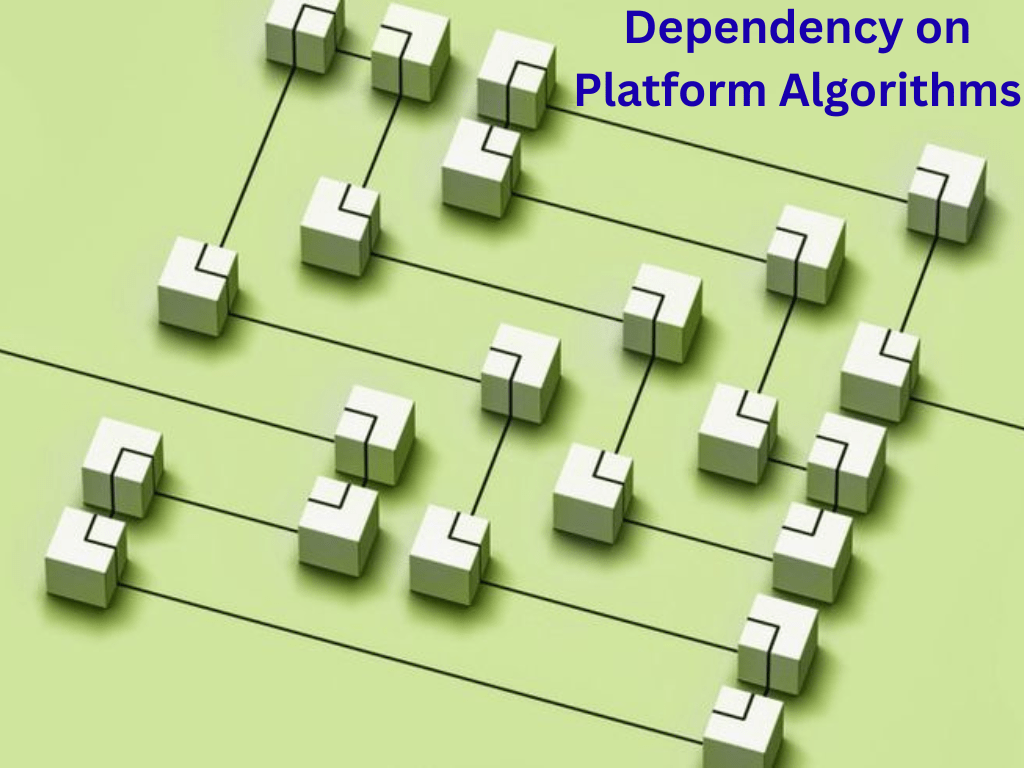

5. Limited Branding Opportunities
Businesses and content creators have less opportunity to demonstrate their brand identity when content arrives using answer engines, such as voice assistants, AI chatbots, or featured snippets.This is known as limited branding opportunities. These services frequently just extract just a little of the information, like a list or a brief paragraph, and do not include branding factors like calls to action, graphics, logos, or even consistent credit. In view of this, even while your material might be utilized to respond to user requests, the audience might not immediately relate the information to your brand.
6. Attribution Isn’t Always Guaranteed
A significant drawback of Answer Engine Optimization (AEO) is the reality that search engines, voice assistants, or AI chat bots can employ your material to respond to user inquiries without formally recognizing your website or brand. This is known as “attribution isn’t always guaranteed.” The original source may not be cited at all in voice search or AI-generated searches, and in alternate cases, a tiny extract will appear with a barely visible source.


7. Harder to Measure ROI
More challenging to determine While common statistics like clicks, page views, and conversions might not accurately reflect the value of material utilized in voice answers or zero-click results, ROI refers to the issue of assessing the return on investment from Answer Engine Optimization (AEO) actions. It becomes complicated to observe user action, engagement, or attribution when answer engines frequently provide information instantly on the search results page or through AI assistants—without referring users to the original webpage.
8. Content Can Become Outdated Quickly
The challenge of maintaining accuracy and relevance in digital content, especially when looking for visibility through Answer Engine Optimization (AEO), is often referred to as “content can become outdated quickly As answer engines favor content which provides the most current accurate data, outdated facts, statistics, or practices could make a page less probable to be chosen for voice feedback, AI-generated responses, or featured snippets.

Furthermore, responses engine optimization (AEO) is a vital component of a digital strategy that focuses on providing trustworthy, concise, and rapidly assimilated information in need fulfil the demands nowadays consumers who rely on voice search, AI assistants, and zero-click results. AEO helps companies and content producers to stay visible as search behaviour changes toward rapid answers by establishing them as the reliable source that drives these responses. In a growing automated web, AEO not only improves discoverability but also creates authority and confidence through the use of structured data, question-and-answer formats, and content that is according to user intent.

No Comments